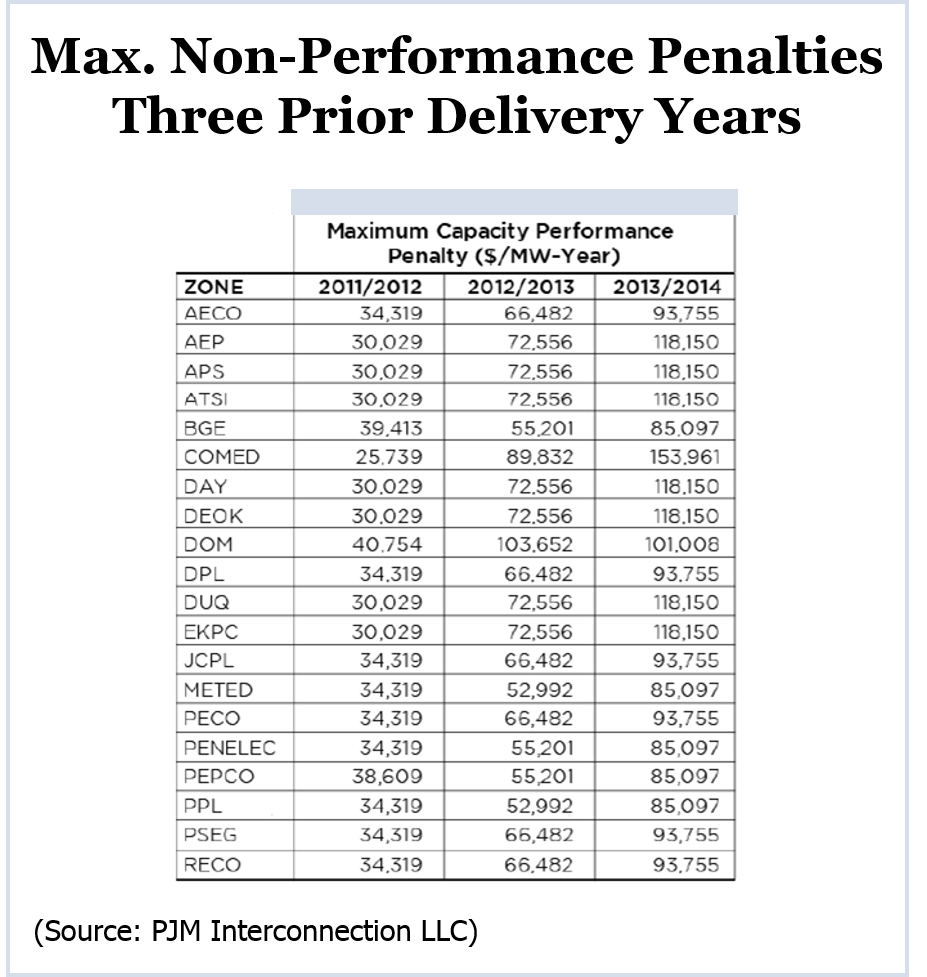Demand Response to be Bid by Load
By Rich Heidorn Jr.
Holding firm on their plans to redefine the capacity market, PJM officials Tuesday offered a revised proposal that they said is less punitive and restrictive.
The revisions attempt to address the concerns of stakeholders who filed numerous comments complaining about aspects of PJM’s original proposal. The changes also include a plan to address an appellate court ruling voiding federal jurisdiction over demand response.
The revised proposal retains two products: Capacity Performance and Base Capacity. But it contains several proposed changes from the original plan released in August:
- Simplified eligibility requirements for Capacity Performance resources.
- Resources would not be required to provide officer certifications. Instead, capacity sellers offering the product would be “representing that [they have] taken sufficient actions to ensure the resource has the capability to provide energy when needed during both summer and winter peak-load conditions and extreme weather events.”
- Resources would not be excluded based on eligibility requirements but would be held to stringent performance standards. PJM said the change should “avoid the potential for inadvertent barriers to participation.”
Reduced risk uncertainty. Non-performance penalties would be based on the net cost of new entry (CONE) rather than LMPs. Penalties would be capped at 1.5 times net CONE for the delivery year and 0.5 times net CONE for a single event.
- Simplified flexibility requirements for Capacity Performance resources. PJM has eliminated “resource classes” and would instead depend on the “demonstrated physical capabilities of each resource.”
- A more incremental transition mechanism. The proposed transition will “include a more gradual phase-in approach.” PJM said it “recognizes the need to develop a balanced transition mechanism that provides incremental improvements to address the issues while recognizing the need to allow time for investment, transition of contracts and transition cost management.”
PJM’s original schedule called for filing a revised proposal incorporating stakeholder feedback. The only question was how much PJM would change in response to the widespread criticism it received. (See Something for Everyone to Dislike in Capacity Performance Proposal.)
Demand Response Change
PJM also proposed changing its handling of demand response and energy efficiency in response to the D.C. Circuit Court of Appeals’ May 23 ruling (Electric Power Supply Association v. Federal Energy Regulatory Commission, case No. 11-1486) that overturned FERC Order 745. The court ruled that FERC’s order, which required PJM and other RTOs to pay DR resources market-clearing prices, violates state ratemaking authority. (See Appeals Court Snuffs Hope for FERC Demand Response Jurisdiction.)
To sidestep the legal issues, PJM proposes to have load-serving entities use DR and EE to reduce their demand beginning with the May 2015 Base Residual Auction.
LSEs would submit bids specifying how much they are willing to cut their demand at a given price. Cleared bids would effectively shift the demand curve left and reduce the volume of capacity procured.
PJM said it “continues to believe that it is critical for wholesale demand to indicate its preferences with respect to the price it is willing to pay for capacity but above which it does not wish to purchase capacity and instead commits to limiting its consumption when PJM approaches emergency conditions.”
Because of uncertainty about how FERC may respond to the court’s ruling, PJM said it “reserves the right to modify the timing and approach of its proposal for allowing demand response participation in [capacity] auctions based on subsequent actions of the courts and the FERC.”
PJM detailed its proposed DR changes in a white paper also issued late Tuesday. It will brief stakeholders on the proposed DR approach at 9 a.m. Wednesday, before the Market Implementation Committee.
PJM will discuss the revised Capacity Performance proposal with stakeholders from 1 to 4 p.m. Oct. 15.
The Board of Managers will make the ultimate decision on what PJM files with FERC following an Enhanced Liaison Committee meeting with members Nov. 4 in Philadelphia. PJM officials are targeting a FERC filing by Dec. 1 in order to have the changes in place for the May 2015 BRA.



